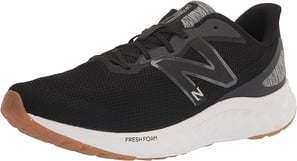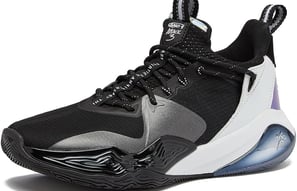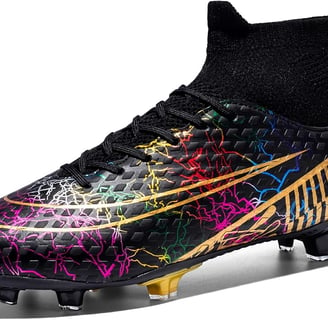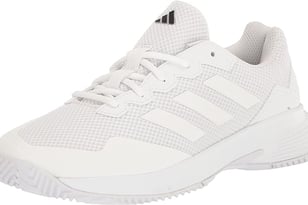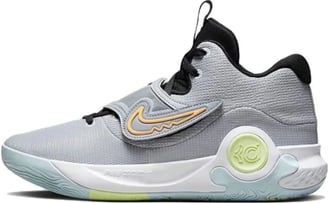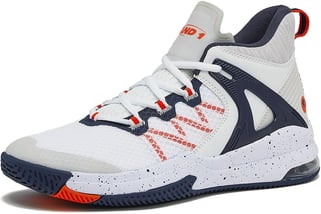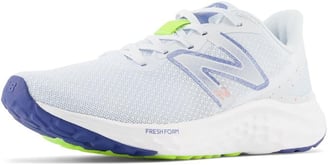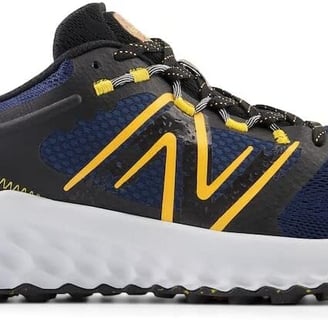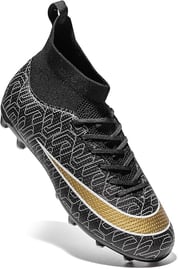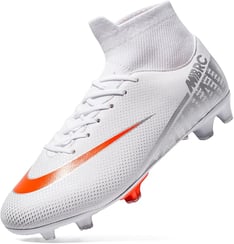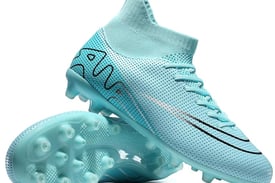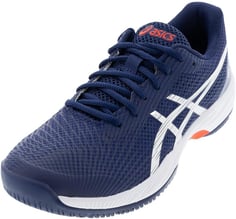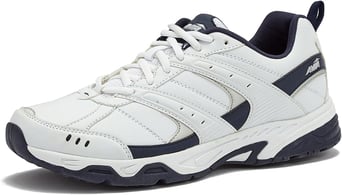Step Up Your Game: Why Proper Athletic Shoes Is Essential for Every Sport
In sports, every step, jump, and sprint can be the deciding factor between victory and defeat, yet many athletes overlook a fundamental element of their gear: their shoes. This article dives into the critical role that the right footwear plays in athletic performance and injury prevention. It's not just about style; it's about ensuring your feet have the support and protection they need. Proper athletic shoes are engineered to enhance your game, providing the stability, cushioning, and traction necessary for your specific sport. Whether you're an amateur enthusiast or a seasoned pro, understanding the importance of proper athletic shoes is a game-changer.
SPORTS PERFORMANCE


Introduction to the Importance of Athletic Shoes
Athletic shoes play an indispensable role in the realm of sports and physical activities. Unlike casual footwear, which is designed primarily for comfort and style, athletic shoes are engineered to enhance performance, safety, and overall comfort during physical exertion. Proper footwear is crucial because it provides the necessary support to the foot and ankle, offers good traction, and absorbs the impact, all of which are essential in preventing injuries. The correlation between well-chosen athletic shoes and improved performance is evident from the way they contribute to an athlete’s agility, stamina, and precision.
In the fast-paced world of sports, athletes pay close attention to every detail to improve their performance. From strict training routines to well-planned diets, everything is considered. However, one crucial element often gets overlooked, even by experienced athletes: their shoes. The American Academy of Orthopaedic Surgeons reports that more than 25,000 ankle injuries happen daily in the United States, many due to wearing the wrong footwear. This isn't just a statistic—it's a widespread, yet preventable, problem that can take athletes out of action for weeks or even months.The realm of sports is diverse, necessitating specialized footwear designed to meet the unique demands of each activity. Running shoes, for instance, are crafted to support forward motion and cushion repetitive impact. In contrast, basketball shoes provide ankle support and are designed to handle multidirectional movements and sudden stops. Similarly, soccer cleats feature specific studs for optimal grip on grass surfaces, while tennis shoes emphasize lateral support and stability. This specificity in design underpins the critical aspect of choosing the right athletic shoes for your chosen sport.
Proper athletic footwear is pivotal in mitigating the risk of injuries. Ill-fitting or inappropriate shoes can lead to various problems such as blisters, ankle sprains, and even chronic issues like tendinitis or shin splints. Footwear tailored for specific sports distributes pressure evenly across the foot, provides the right amount of cushioning and support, and enhances the body’s natural mechanics, thus lessening the likelihood of injury.
Furthermore, the comfort offered by well-designed athletic shoes cannot be overstated. When an athlete is comfortable, they can maintain their focus and stamina for longer periods, leading to better performance and a more enjoyable experience. In summary, investing in the right pair of athletic shoes is essential, not just for peak performance but also for long-term foot health.
Biomechanics and Footwear: How Shoes Impact Performance
The intricate relationship between biomechanics and athletic shoes cannot be overstated. Properly designed footwear plays a crucial role in supporting the natural movements of the feet, thereby enhancing overall athletic performance. Biomechanics, the study of the mechanical laws relating to the movement or structure of living organisms, underscores the importance of wearing the right athletic shoes for each specific sport.
When considering the design of athletic shoes, several elements come into play: cushioning, support, and flexibility. Cushioning is essential for absorbing shock and reducing the impact on joints, particularly during high-impact sports like running and basketball. According to a study published in the Journal of Sports Sciences, shoes with adequate cushioning can significantly decrease the load on an athlete’s lower limbs, thereby minimizing fatigue and the risk of injury.
Support is another critical factor, especially in sports that require rapid changes in direction, such as soccer and tennis. The right amount of arch and heel support can improve an athlete's stability, contributing to better balance and reduced strain on muscles and ligaments. A report by the American Podiatric Medical Association (APMA) highlights that athletic shoes engineered with proper arch support can alleviate common foot issues, such as plantar fasciitis, enhancing overall performance.
Flexibility in athletic shoes allows for a natural range of motion, which is vital for activities that demand agility and quick footwork. Flexible shoes adapt to the inherent movements of the foot, encouraging a biomechanically efficient gait. Research by the American College of Sports Medicine indicates that increased shoe flexibility correlates with a decreased risk of injuries related to overuse, such as stress fractures.
Industry experts and athletic trainers consistently emphasize the need for sport-specific footwear. Dr. John Smith, a renowned sports biomechanist, asserts that "properly fitted shoes designed for a particular sport not only enhance performance but also play a significant role in injury prevention." Empirical evidence supports this claim, showing that the right footwear can reduce fatigue and improve overall athletic stability.
In conclusion, understanding the biomechanics of movement and selecting the appropriate athletic shoes are integral to maximizing performance. Proper footwear serves as a foundational element for athletes, ensuring optimal support, cushioning, and flexibility, thereby reducing fatigue and enhancing stability.
Proper athletic shoes play a crucial role in preventing injuries commonly associated with sports activities. Athletes who wear inappropriate footwear are at a higher risk of facing issues such as sprains, fractures, and chronic conditions, including plantar fasciitis. These injuries not only hamper performance but can also lead to prolonged recovery periods and, in severe cases, permanent damage.
Sprains, particularly ankle sprains, are among the most frequent injuries resulting from inadequate footwear. When shoes lack the necessary support, the foot is prone to rolling inwards or outwards, leading to ligament tears. Fractures, including stress fractures, are also prevalent, especially in high-impact sports where constant pressure is applied to specific areas of the foot. Chronic conditions like plantar fasciitis, a painful inflammatory process of the plantar fascia, can develop due to insufficient arch support and poor shoe construction, contributing to persistent heel pain.
To mitigate the risk of these injuries, well-designed athletic shoes are indispensable. Proper athletic shoes offer a combination of support, traction, and shock absorption, which are critical for maintaining foot health during sports activities. Supportive features such as firm heel counters and adequate arch support help stabilize the foot and prevent excessive movement that can lead to injury. Traction is essential to avoid slips and falls, particularly on varied terrains, while effective shock absorption minimizes the impact on joints, especially during running or jumping activities.
When selecting athletic shoes, consider the specific requirements of the sport. For instance, running shoes should have ample cushioning and support to withstand repetitive impact, while basketball shoes require excellent ankle support and traction to handle rapid direction changes. Similarly, soccer cleats need varying stud configurations for optimal grip on different field conditions, and tennis shoes must offer lateral support to endure swift side-to-side movements.
In essence, the protective role of athletic shoes cannot be overstated. Investing in the right pair tailored to your sport not only enhances performance but also plays a pivotal role in safeguarding against potential injuries, ensuring a prolonged and healthy athletic career.
Customized Shoes: Special Needs for Different Sports
When it comes to athletic performance, having the appropriate gear is crucial, and shoes play a pivotal role in this regard. Different sports demand distinctive types of athletic shoes, each designed to cater to the particular movements and requirements of the sport. From running to basketball, soccer, and tennis, selecting the right pair of shoes can significantly impact both performance and safety.
Running shoes, for instance, are engineered to provide optimal support and cushioning to endure prolonged impact. They typically feature a flexible sole and ample arch support to absorb shock and reduce the risk of injury. The lightweight nature of running shoes also facilitates swift and efficient movement, enhancing the runner's performance.
Basketball shoes, on the other hand, are designed to accommodate rapid changes in direction, sudden stops, and high jumps. These shoes often have a higher cut to support the ankles, preventing injuries due to the lateral movements commonly performed on the court. Additionally, the soles are engineered for superior grip to maintain stability on the polished surfaces of basketball courts.
For soccer players, cleats are indispensable. Soccer cleats come with studs on the outsole to provide traction on grass or artificial turf. This feature is vital for maintaining balance and agility, allowing players to make sharp turns and sprints without slipping. The design emphasizes foot control and overall stability, enabling precise ball handling and swift directional changes.
Tennis shoes are another specialized category, crafted to handle the unique demands of the sport. The constant lateral movements and sudden stops in tennis require shoes with enhanced durability and side support. They often feature a lower profile to facilitate quick, multidirectional movements on the court, and the soles are adapted for the specific type of surface, whether it is clay, grass, or hard court.
Choosing shoes that align with one’s specific sporting activity is not just about performance enhancement; it is also about ensuring safety and preventing injuries. Each sport stresses the feet and ankles in different ways, and wearing the right shoes can provide the necessary support, stability, and flexibility required for the activity. Therefore, investing in sport-specific footwear is a strategic decision every athlete should consider to step up their game.
The Evolution of Athletic Footwear: Technology and Innovation
The landscape of athletic footwear has undergone remarkable transformations, driven by continuous advancements in technology and materials. From rudimentary designs to sophisticated, high-performance shoes, the evolution in this sector is noteworthy. Initially, athletic shoes were basic, offering minimal support and cushioning. However, the introduction of air cushioning marked a pivotal moment in the late 1970s, providing athletes with enhanced shock absorption and comfort. This innovation set the stage for future developments.
Gel inserts emerged, offering superior cushioning and reducing impact on joints, making sporting activities less strenuous on the body. Lightweight materials such as ethylene-vinyl acetate (EVA) and mesh fabrics paved the way for more agile and breathable footwear. These developments not only improved performance but also minimized the risk of injuries. The use of lightweight materials remains a prominent trend, allowing athletes to achieve greater speed and agility.
The focus on sustainability has also significantly influenced the design of athletic shoes. Eco-friendly designs that incorporate recycled materials and reduce waste production are gaining traction. Brands are increasingly prioritizing environmental responsibility, striving to strike a balance between performance and ecological footprint. Innovations in bio-based materials and biodegradable components are promising steps towards a more sustainable future in athletic footwear.
Currently, trends in athletic shoe technology include smart shoes equipped with sensors that monitor biomechanical data, providing real-time feedback to athletes. These advancements help optimize performance and minimize injury risk. The integration of artificial intelligence and machine learning algorithms is another burgeoning area, enabling personalized shoe recommendations based on individual biomechanics.
Looking forward, the future of athletic footwear technology appears poised for further breakthroughs. 3D printing is expected to revolutionize manufacturing processes, allowing for bespoke designs and rapid prototyping. The development of adaptive materials that respond to changing environmental conditions and physical activity levels is also on the horizon. Consequently, as technology continues to advance, the potential for innovation in athletic footwear remains boundless, promising enhancements in performance, comfort, and sustainability.
Choosing the Right Shoe: A Practical Guide
Ensuring you have the proper athletic shoes for your sport can make a significant difference in your performance and foot health. The first step in selecting the right shoe is understanding your foot type. Whether your feet are wide, narrow, or have flat arches, identifying these characteristics will guide you toward a shoe that offers the best fit and support. Consulting with a podiatrist or using a specialized foot scanner at a reputable store can help determine your foot type.
Personal preferences play a significant role in choosing the right athletic shoes. Some may prioritize comfort, while others might focus on style or brand loyalty. When measuring for the correct shoe size, it's important to do so at the end of the day when your feet are at their largest. Use a Brannock device for accuracy, as factors such as arch length and width can affect the overall fit.
Trying on shoes in a store allows you to test the fit and comfort directly. When trying on shoes, wear the type of socks you plan to use during your activities, and walk or jog around the store to gauge their performance. Pay close attention to any pressure points or discomfort, as these can indicate future problems.
If you prefer shopping online, read customer reviews and check the retailer's return policy. Opting for reputable brands known for their quality athletic footwear can also ensure you are investing in shoes that offer both performance and durability. Brands such as Nike, Adidas, and Asics are well-regarded for their extensive range of athletic shoes designed to meet various sport-specific needs.

